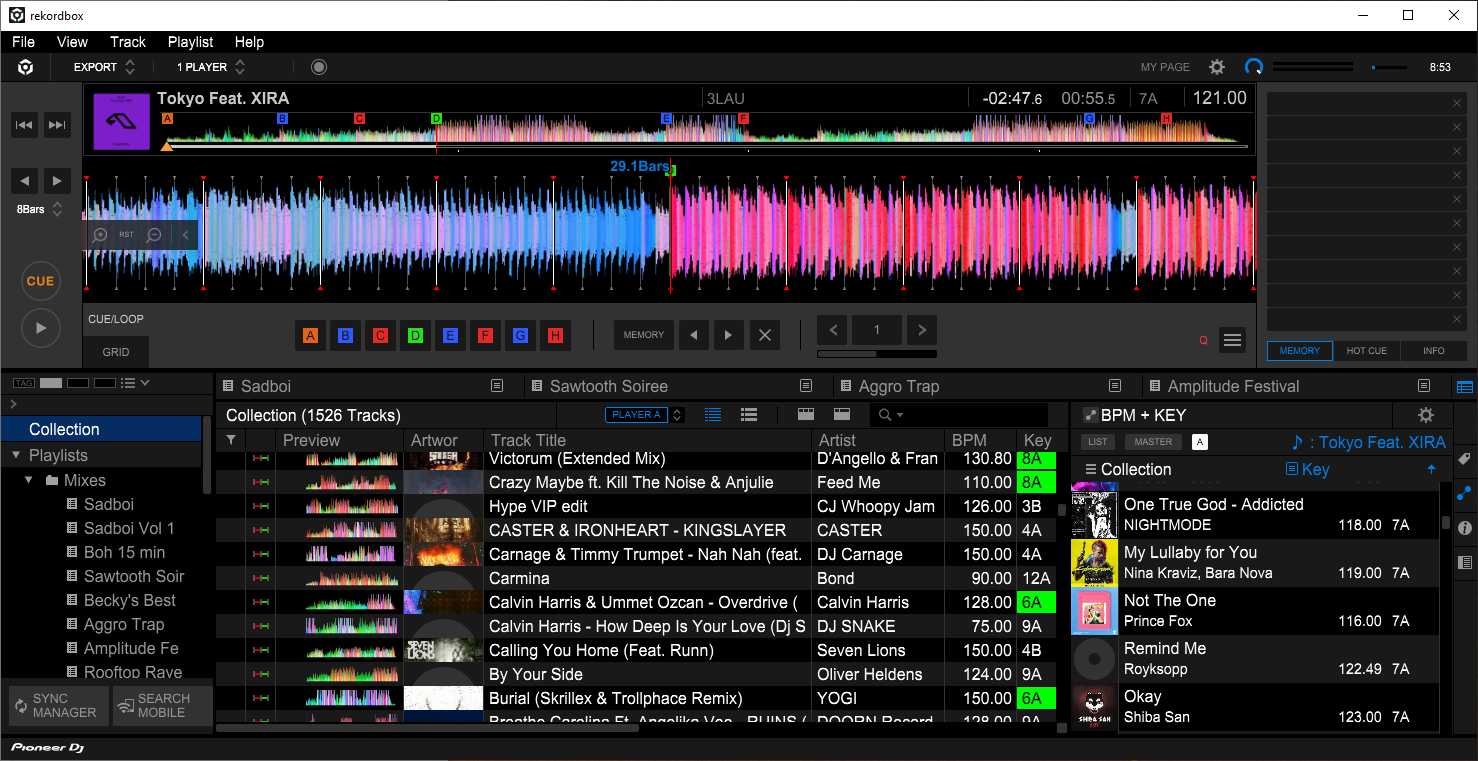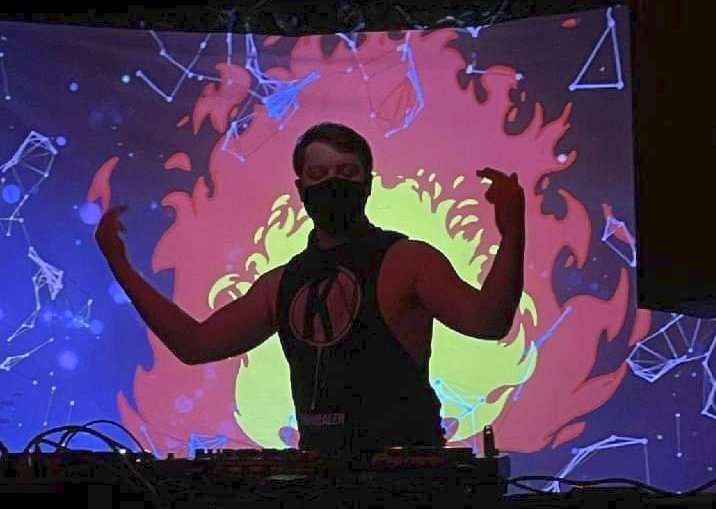
Welcome! If you want to learn how to DJ, then you’re in the right place. This is the first in a series of three posts teaching you how to go from knowing nothing to being able to play at your first party. Below I share a few personal details about how I got started, but feel free to skip to “What you need to get started” if you just want technical details. I hope you enjoy :)
Part 1: What You Need to Start DJing
Part 2: How to Learn DJ Basics
Part 3: How to Make a DJ Mix
How I got started DJing
Those of you who know me well know that I have been a massive fan of electronic dance music (aka EDM) ever since I first found it in 2008. I always loved the energy and excitement of guitar solos in rock and metal, and I soon realized that I could find that same energy and excitement but for the entirety of a song in electronic music. Starting on Tiesto and Daft Punk got me hooked on Trance and House, and I soon found a home in the Electro, Dubstep, and Drum & Bass communities.
What some of you might not know is that from 2010 to 2012 I actually ran my own EDM blog. While admittedly the writing quality is a bit amateurish, I remember having a huge amount of fun spending time digging around for new music and sharing it with curious friends. By 2012 the music of Skrillex and others had become so mainstream though that fewer and fewer people were asking me for suggestions, and so I chose to end the blog. Speaking of Skrillex, I actually posted about him way back in 2010 before he released his eventually Grammy-winning and massively influential EP Scary Monsters and Nice Sprites. For those of you who don’t know, Skrillex’s earlier EDM production was a lot more electro focused, so back then I chose Slats Slats Slats as my favorite track by him. I still love that track, so much so that I played it in my Sawtooth Soiree rave mix.
Since ending my blog I had a dream of DJing and producing my own music, but getting a bachelors, masters, and PhD in engineering took up all of my time. Now that I finally have my weekends back, I’ve been diving deep into DJing and music production. While I am still relatively new to music production, I am thrilled to say that I have now successfully DJed more than a few raves and parties. You can find recordings of my favorite mixes on my Soundcloud profile. When I told folks that I was teaching my wife how to DJ, a few other people expressed interest in learning. So, I’ve written these blog posts to serve as a reference for anyone who might like to learn. I hope you enjoy!
If you have any questions about what I’ve written here, feel free to write them in the comments below! Also, these are only my thoughts and systems for DJing. There are many other ways to succeed.
What you need to get started
OK, thats enough of me telling my life story before sharing the recipe! Let’s start with what you will need before you can get started. Specifically, some musical knowledge, a music library, DJ software, and DJ hardware.
Musical Knowledge
The first thing that you’ll need before you get started on DJing is some knowledge of music theory. The act of making a smooth transition between tracks is core to DJing, and these smooth transitions are only possible due to patterns that are shared between different pieces of music. By learning what these patterns are and what words to use to describe them you will become a much better DJ. If you aren’t classically trained in music, the five most important new vocabulary words you will need to learn are beats, bars, phrases, BPM, and key signature.
Beats, bars, and phrases are each a different level of hierarchy in the structure of music. Each song is made up of multiple phrases (introduction, breakdown, drop, bridge, etc), each phrase is made up of multiple bars (typically 8 bars in EDM), and each bar is made up of multiple beats (typically 4 beats in EDM). When transitioning from one track to another it is helpful to keep phrasing in mind since overlapping certain phrases tends to sound better than others. For great examples and a deep explanation, check out the video below by my red-headed brother from another mother Phil Harris.
BPM stands for Beats Per Minute, so it is a measurement of the speed of a given song. When we transition between songs we typically want each of these songs to be playing at the same speed and for the beats to be aligned. In engineering terminology we would say that we want both the frequency and the phase of the songs to be the same. By using a DJ controller we can adjust the frequency (BPM) of a song by adjusting the tempo slider, and we can adjust the phase (alignment in time) by spinning the side of the jog wheel.
The key signature of a given song corresponds to the specific set of notes used to create that song. The easiest key signature to explain is C Major, which includes just the white keys on a piano. Certain key signatures share a lot of the same notes, and so you can predict how well two songs will sound together if you know both of their key signatures.
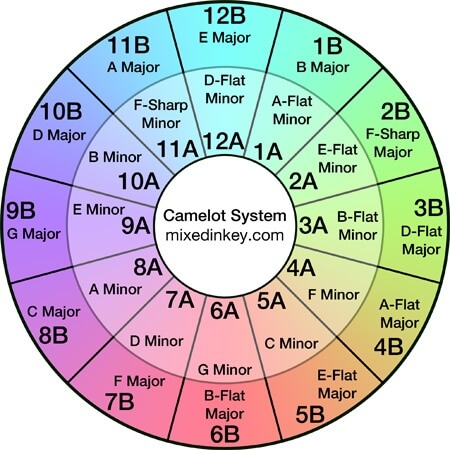
To make it easier for people to remember which key signatures share the most notes, the Camelot system (shown in the image above) was created. On the Camelot wheel, each cell represents a given key with a classical name (such as C Major) and a Camelot name (such as 8B for C Major). The keys that are adjacent on the wheel to any particular key share the most amount of notes, and therefore will sound the best to mix between. If you use Camelot notation you don’t even need to look at the wheel to know which keys will sound good with any other given key, since all adjacent cells either share a number with the key you’re interested in or they increase/decrease the number of the key by one. For a great explanation of mixing in key I recommend the video below by Crossfader.
It is worth mentioning that Rekordbox does now support displaying keys in Camelot notation, and also that it isn’t always necessary to strictly mix in key. The ultimate test of whether or not a transition sounds good is if you think it sounds good. Software tools do their best to identify what key a song is in, but sometimes they can get it wrong. Also, depending on how the songs are written it may be possible to jump by 2 cells instead of 1 on the Camelot wheel, since those keys will only differ by 2 notes. A good rule of thumb worth repeating is when DJing, always remember to trust your ears!
Music Library
Because we live in an age when streaming is king, most people listen to music through Spotify, Soundcloud, and Apple Music. Thankfully some DJ software (including Rekordbox) does enable you to play music from some streaming services, but this functionality requires that you bring a laptop and have a good internet connection wherever you play. Most DJs prefer to work with actual song files instead since that offers the most flexibility and reliability. Pioneer CDJs are industry standard and can load music from a properly formatted USB, so most DJs don’t need to bring anything other than a USB filled with their music files when they go to play at a club.
OK cool, so if you want music files for DJing then how should you get them? This is a legitimate question if you’ve become used to streaming. Frustratingly, Spotify and the other streaming services purposefully make it hard for you to buy music on their site since otherwise you would have less of a need for them. The best way that I’ve found so far to buy songs from a Spotify playlist is a web app called Merch Table which can convert a spotify playlist into a convenient list of links to buy the songs on Bandcamp. If instead you’re looking for an iTunes-esque website optimized for DJing then you should check out Beatport. Beatport has a significant advantage over iTunes for a few reasons, but the biggest thing for me is seeing the BPM and key for every track (this will become important when you’re deciding which songs to mix with others). Finally, there are DJ Pools which are monthly subscriptions to services which enable you to download unlimited song files. For more details and a recent review of the top DJ Pools, check out this article.
DJ Software
Once you have your music library, you’re ready to import it into your choice of DJ software! DJ software will play a few important roles for you: music library organization, track preparation for performance, and either exporting your library to a USB or enabling a non-standalone DJ controller to play music. There are quite a few options for DJ software, so if you’re not sure which to choose then I recommend taking a look at this post which describes the pros and cons of the top 3 platforms. My personal favorite DJ software is Rekordbox because of its excellent organization and USB export tools, so the rest of this blog post will describe how to make a mix using Rekordbox specifically.
DJ Hardware
Your home DJ studio will consist of a few components: a DJ controller or CDJs+mixer, speakers, headphones, and optionally a formatted USB stick. Most people already have speakers, headphones, and USB sticks, so here I’ll quickly go over the differences between DJ controllers, all-in-one DJ systems, and CDJs. Each kind of DJ hardware has a different price point and different functionality, but any of these types of hardware can be used to learn how to DJ. Because Pioneer DJ is the standard in most bars and clubs (and I also use Pioneer DJ hardware) all of the examples given below are from Pioneer DJ, but hardware from other manufacturers like Denon DJ can also work for you. Also, the costs that I list are for new equipment, but it is often possible to find used equipment on Facebook marketplace or even in stores like Guitar Center. Older versions of this hardware are often available as well, so keep an eye out for those if you’re trying to save money. Finally, if you would like to try out DJing before spending money on hardware then you might be interested in one of the many DJ apps for tablets and phones. Personally, I would recommend a cheap controller instead of an app since even the cheap controllers have a lot more in common with standard hardware than apps.
DJ Controller ($150-$250)
If you are a beginner then a DJ controller is right for you. This is the cheapest DJ hardware available, and when combined with a laptop it can do absolutely everything you need to practice DJing. You will need a computer to organize your music anyway, so there is no harm in needing a computer to play music. Most controllers also have convenient performance pads mapped to cue points which I find to be especially helpful. Effects and looping functionality are nearly always available as well. The example I show below is the Pioneer DDJ-400-N, which is very similar to the controller that I started out with.
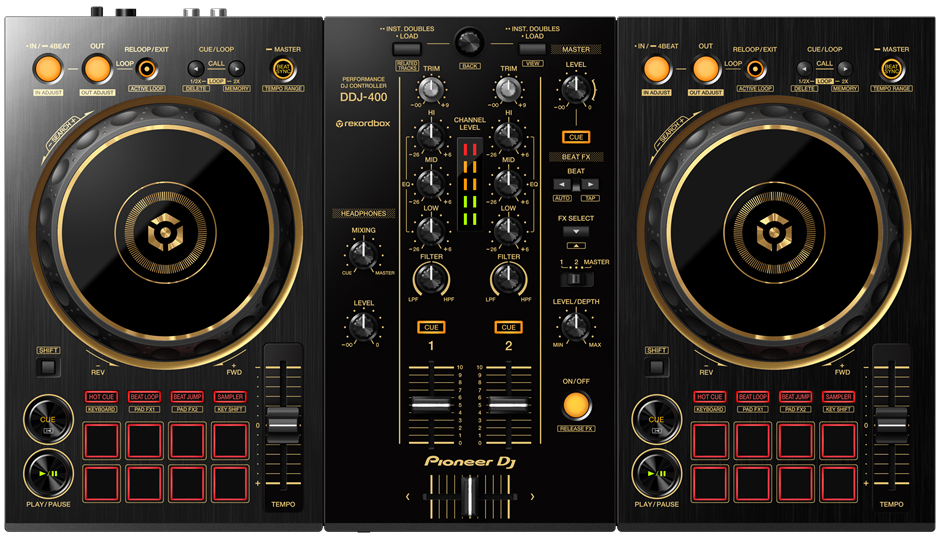
All-in-one DJ System ($1,500-$2,000)
If you are lucky enough to start DJing in clubs but don’t have a ridiculous amount of money to spend on a full club system for your home studio, you may be interested in an all-in-one DJ system. All-in-one DJ systems offer all of the same functionality of a DJ controller but also offer a built-in screen for viewing waveforms & browsing songs, balanced connections for connecting to professional speakers/monitors, physically larger controls (easier to change BPM), and don’t require a laptop. The layout of all-in-one DJ systems is also very similar to the corresponding CDJs, which will help you become familiar with that layout. Finally, all-in-one DJ systems work by importing music from a USB (just like CDJs), so these systems are great for big parties with multiple DJs since each new DJ only needs to connect their USB to get started. The example I show below is the Pioneer XDJ-RX2, which is very similar to the system that I currently use at home.
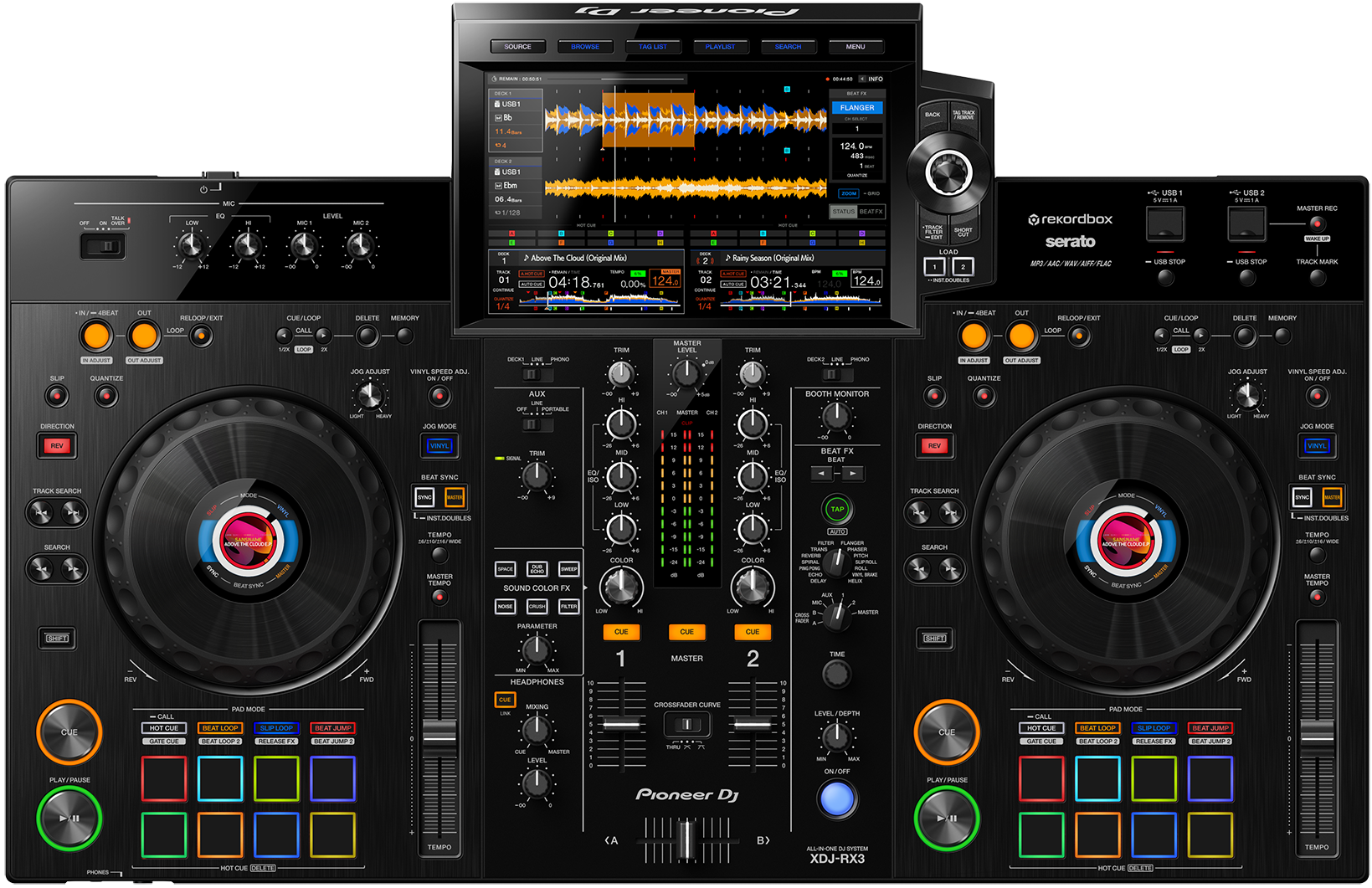
CDJs and Mixer ($3,000-$7,000+)
Most dance clubs that I am familiar with use CDJs and a mixer for their DJ hardware. Clubs like to use CDJ + mixer setups because they are physically more robust, they can have 4 or more audio sources (such as additional CDJs, analog turntables, or instruments), and because individual CDJs or mixers can be replaced without needing to replace the entire system. Before you dump $5k on a few CDJs though you should be aware that they also have a lot of drawbacks! Beyond being very expensive, CDJ + mixer setups don’t typically have performance pads for cue points (sometimes limiting you to 3 cue points total), don’t enable you to beatmatch by eye since each display only shows one track at a time, and are physically huge which can be real problem for folks in small apartments. So why would you as a bedroom DJ ever want CDJs and a mixer? The only real reason to do this is so that you can practice on equipment that is similar or identical to what you will be playing on live at a club. If you rely on many cue points and beatmatching by eye while practicing then you might be caught totally off guard when you’re asked to play without those nice tools. The example I show below is a pair of Pioneer CDJ-3000s and a Pioneer DJM-900NXS2 mixer.
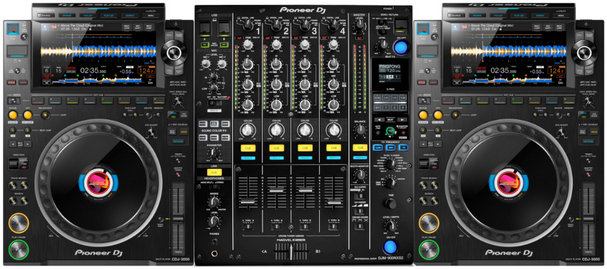
OK great, now you know what you need to get started DJing! To learn how to take your musical knowledge, music library, and DJ setup to the next level with DJ basics, check out my next blog post :)
